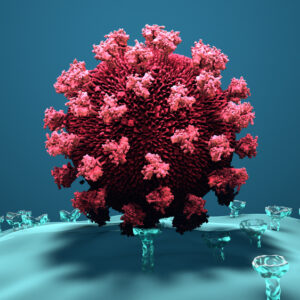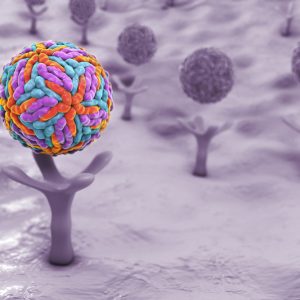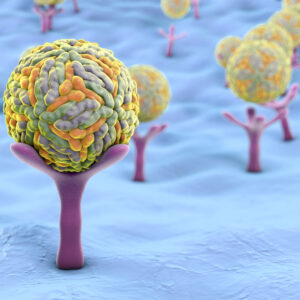Togavirus Receptors
The Native Antigen Company manufacturers highly purified virus-host cell receptors using state-of-the-art expression and purification techniques. On request we can also undertake custom preparation of recombinant and native proteins for a broad range of disease states.
Togavirus Receptors Background
Togaviridae is a family of small, enveloped viruses with single-stranded positive-sense RNA genomes of 10–12 kb. Within the family, the Alphavirus genus includes a large number of species that are mostly mosquito-borne and pathogenic in their vertebrate hosts. Many are important human and veterinary pathogens (e.g. Chikungunya virus, Mayaro virus, O’nyong’nyong virus and Eastern equine encephalitis virus). Before April 2019 the family also contained the genus Rubivirus that has now been moved to the family Matonaviridae. Replication is cytoplasmic, in vesicles derived from the plasma membrane/endosomal compartment and assembled virions bud from plasma membrane. Virions are spherical, enveloped particles about 70 nm in diameter. The particle consists of a nucleocapsid core surrounded by a lipid bilayer that is embedded with glycoprotein spikes. Eighty trimeric glycoprotein spikes cover the surface of alphavirions and each spike is composed of three E1-E2 heterodimers. However, in some alphaviruses, the E3 glycoprotein remains non-covalently associated to these spikes.
Alphaviruses attach to cells, probably via interactions between E2 and a poorly defined family of cellular receptors found on many vertebrate and invertebrate cells. Entry is thought to take place in mildly acidic endosomal vacuoles where glycoprotein spikes undergo conformational rearrangements.
It has been shown that Ross River virus E2 protein uses the collagen-binding alpha1beta1 integrin as a cellular receptor. DC-SIGN and L-SIGN are expressed in several early targets of arbovirus infection, including dendritic cells (DCs) and cells of the reticuloendothelial system and have been shown to function as attachment receptors for Sindbis (SB) virus. Likewise, the cell adhesion molecule MXRA8 has been shown to be an entry mediator for multiple arthritogenic alphaviruses, including chikungunya, Ross River, Mayaro and O’nyong nyong viruses.
References
- Cheng et al. (1995). Nucleocapsid and glycoprotein organization in an enveloped virus. Cell. 80(4):621-30.
- Zhang et al. (2011). 4.4 Å cryo-EM structure of an enveloped alphavirus Venezuelan equine encephalitis virus. EMBO J. 30(18):3854-63.
- Gregory J. Atkins (2013). The Pathogenesis of Alphaviruses, ISRN Virology, vol. 2013, Article ID 861912, 22 pages.
- Linn et al. (2005). An arthritogenic alphavirus uses the α1β1 integrin collagen receptor, Virology, vol. 336, no. 2, pp. 229–239, 2005.
- Klimstra et al. (2003). DC-SIGN and L-SIGN Can Act as Attachment Receptors for Alphaviruses and Distinguish between Mosquito Cell- and Mammalian Cell-Derived Viruses. Journal of Virology Oct 2003, 77 (22) 12022-12032
Togavirus Receptors
We have manufactured a range of Togavirus receptors. These proteins are produced to the highest quality, using in-house bespoke expression and purification methods.
Questions?
Check out our FAQ section for answers to the most frequently asked questions about our website and company.



